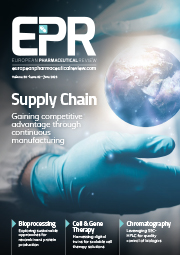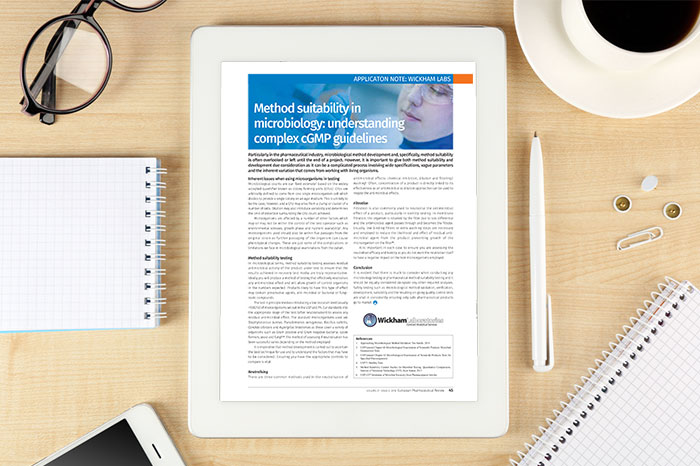Application Note: Method suitability in microbiology: understanding complex cGMP guidelines
Posted: 15 July 2016 | Wickham Laboratories | No comments yet
Particularly in the pharmaceutical industry, microbiological method development and, specifically, method suitability is often overlooked or left until the end of a project. However, it is important to give both method suitability and development due consideration as it can be a complicated process involving wide specifications, vague parameters and the inherent variation that comes from working with living organisms…
Inherent issues when using microorganisms in testing
Microbiological counts are our ‘best estimate’ based on the widely accepted quantifier known as colony forming units (CFUs). CFUs are arbitrarily defined to come from one single microorganism cell which divides to provide a single colony on an agar medium. This is unlikely to be the case, however, and a CFU may arise from a clump or cluster of a number of cells. Dilution may also introduce variability and determines the limit of detection surrounding the CFU count achieved.
Microorganisms are affected by a number of other factors which may or may not be within the control of the test operator such as environmental stresses, growth phase and nutrient availability1 . Any microorganisms used should also be within five passages from the original strain as further passaging of the organism can cause phenotypical changes. These are just some of the complications or limitations we face in microbiological examinations from the outset
This application note is restricted - login or subscribe free to access


Why subscribe? Join our growing community of thousands of industry professionals and gain access to:
- bi-monthly issues in print and/or digital format
- case studies, whitepapers, webinars and industry-leading content
- breaking news and features
- our extensive online archive of thousands of articles and years of past issues
- ...And it's all free!
Click here to Subscribe today Login here









